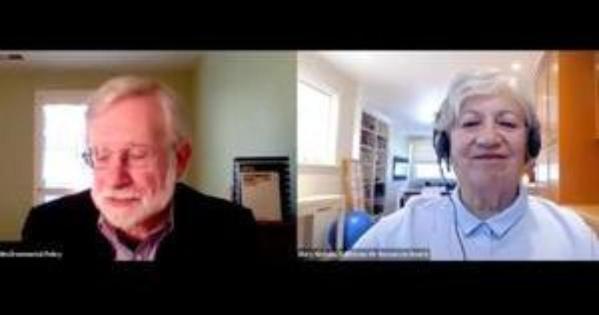A Conversation with Mary Nichols – Chair, California Air Resources Board

If you ask Mary Nichols what the biggest air pollution and climate challenge of the next few years will be for California and the country, she feels the answer is obvious: our “seeming inability to solve the political impasse.” During this hour- long conversation with Dan Fiorino, Director of the Center for Environmental Policy at American University, in an event co-sponsored by the American Lung Association and the American University Center for Environmental Filmmaking, the two covered topics including the value of the Clean Air Act (CAA), two new California laws regarding vehicles and vulnerable communities, the future of clean air and climate, as well as the inherent link between a sound economy and a safe, clean environment. Throughout the conversation, Nichols displayed her signature level-headedness, and forward-thinking-ness that has helped become one of the most prominent environmental regulators in history.
Watch Recording
Nichols emphasized the importance and success of the CAA, noting that “as federal statutes go, it was, and I think it still is, the most powerful action-forcing piece of legislation the Congress has ever passed.” Enacted at the height of bipartisan concern regarding air pollution and the environment, the CAA is sets clear limits, enables innovation, and allow citizen suits. Nichols added that the law authorizes the government to enact rules that push industry to advance technology development and innovation. Because climate change is, in effect, a form of air pollution caused by many of the same activities, the potential is there, Nichols claims, to utilize CAA in order to regulate those activities and decrease climate change effects and risk. On the question of whether the CAA needs an update, Nichols argues instead for expanding authority under the law and making compliance simpler.
And lastly, regarding future clean air challenges, Nichols sees the future EPA Administrator’s mission simply-- reverse the rejection of science and scientists. Restore respect for the laws themselves, and then get to work on using existing regulations to create cleaner air for the entire population. As she says, “there hasn’t been any serious effort to deal with climate at all in the last four years. So, I think we’re overdue for that kind of initiative.”
We can’t imagine the future of regulation in the U.S. without considering the courts, and an audience member asked Nichols to do just that, wondering where she sees potential conflict as the Supreme Court heads toward an almost-certain heavily conservative lean. While acknowledging concern, Nichols embraces a largely positive outlook for the future. While respect for administrative agencies has been eroding, there is precedent holding that agency’s interpretations are given great weight, and a reversal of that doctrine is unlikely, she claims. She also highlights the fact that the decision to allow regulation of carbon dioxide under the CAA was decided by Justice Scalia – not because of his ideology, but because he believed in the statutes and in science – leading in part to Nichols’ optimistic hope that a conservative tilt in the court is not automatically bad for the environment.
Fiorino questioned Nichols about California’s role as a leader in policy innovation such as the recently enacted AB 617 – their Community Air Protection Program, aimed at reducing exposures in vulnerable communities to mitigate the inequitable distribution of air pollution. Nichols credits a renewal of commitment to overall public health for this push, utilizing a bottom up approach in which regulators engage the public to design regulatory initiatives and decrease the inequality of power.
Fiorino’s final question centered on what advice Nichols might offer to young people. Nichols’ first response was that young people should vote. She also encouraged young people to stay idealistic and emphasized that even in polarized times, there is important and fulfilling work to be done in the public sector.
